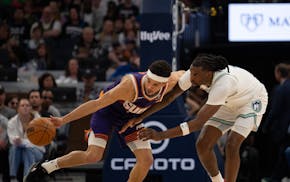As pro sports contracts produce even more eye-popping dollar figures than ever before, the fundamental differences between the contract structures in the top two U.S. leagues — the NFL and MLB — never have been more important for fans to understand.
In the NFL, most players have a certain amount of money in their contract that they are guaranteed to receive, but in general the overall terms of a contract are salary cap-based at best and fictional at worst. NFL contracts are not guaranteed. Players can be cut, at which point they are only owed whatever is still guaranteed to them — a portion, and not always a big one, of the overall contract number.
In MLB (and for the most part in the NBA and NHL as well), contracts are guaranteed. When a player signs a two-year contract for $20 million, that player will be paid the full $20 million whether he performs at an All-Star level, if he stinks up the joint or if he is hurt and never plays.
Here are some helpful local situations to hammer the points home:
• Ricky Nolasco, Twins: He signed a four-year, $49 million contract before the 2014 season. That means all $49 million, through the 2017 season, is guaranteed. Nolasco's track record suggests he should be healthier and more productive in future years of his contract, but he will make all that money regardless of how he performs.
As such, suggestions in comments sections that the Twins "cut" Nolasco are neither realistic nor productive. The best the Twins can hope for is that he starts performing close to the contract's value, or that another team (via a trade) believes he will.
• Joe Mauer, Twins: After this season, he'll be halfway through the eight-year, $184 million deal that pays him $23 million per season. That money is coming to him no matter what. He also has a no-trade clause in his deal. So get used to Mauer being here through 2018, and get used to him making what he makes.
• Adrian Peterson, Vikings: Similarly, Peterson signed a much-publicized $100 million extension in 2011 that runs through the 2017 season. But only $36 million of it was guaranteed, and it was structured in a way that the Vikings make a move after the 2014 season without much of a salary cap penalty or money owed to Peterson.
So even if Peterson has a good year in 2014, his age and contract situation could lead the Vikings to release him or restructure his contract, while the Twins still will be paying Mauer and Nolasco regardless.
michael rand
Suns guard Grayson Allen aggravates ankle injury in 3rd quarter vs. Timberwolves
Riley Greene homers twice and Mark Canha goes deep to power Tigers past Rays 4-1
